Home / When Is the Best Time to Visit Saudi Arabia? A Month-by-Month Guide
Saudi Arabia is a country where timing truly shapes your experience. The weather can switch from cool and breezy to scorching hot in just a few months. So knowing when to go helps you enjoy the country the right way. From November to March, the country feels more welcoming for travellers. The air is cooler, cities come alive with festivals, and exploring famous landmarks and ancient sites feels easier.
This guide breaks down what every season looks like, the best things to do, and what to expect each month.
Saudi Arabia has three main travel periods: peak season, shoulder season, and off-season.
15°C to 28°C (59°F-82°F)
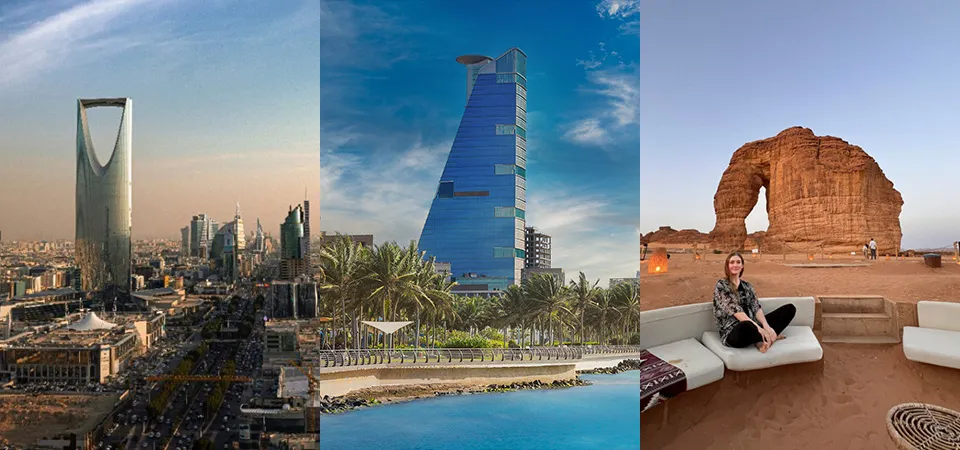
This is the most popular time to visit Saudi Arabia. Temperatures stay mild and comfortable, making it perfect for exploring cities like Riyadh, Jeddah, and AlUla. You can walk through old markets, visit archaeological sites, or even plan religious trips such as Umrah in Mecca and Medina. Many festivals also take place in winter, which adds to the excitement.
If you love open-air adventures, this is your season. Desert safaris, city tours, and hiking are all far more enjoyable without the extreme summer heat.
25°C to 35°C (77°F-95°F)
The shoulder months are for travellers who want balance. Temperatures rise slightly, but it’s still easy to explore outdoors. Good weather continues, but prices drop. Less crowding at popular landmarks and beaches. This period is excellent for photographers and nature lovers who enjoy quieter experiences. The light is beautiful, the evenings are warm, and many cities feel peaceful.
35°C to 45°C (95°F-113°F)
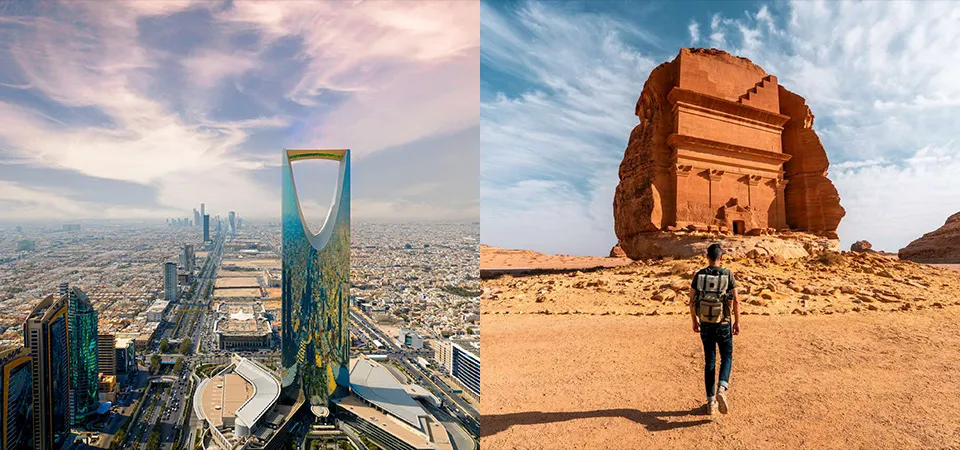
Summer in Saudi Arabia is extremely hot, especially inland. Temperatures can go beyond 45°C (113°F). Still, for those planning wisely, this can be an ideal season for budget travel, with the cheapest hotels and flight deals to Saudi Arabia, plus quieter attractions and malls. Coastal cities like Jeddah or Yanbu stay slightly cooler thanks to the Red Sea breeze, so they’re better choices in summer than desert areas like Riyadh or AlUla.
Each month in Saudi Arabia brings something special: a festival, a harvest, a weather shift, or an activity that just feels right at that time.
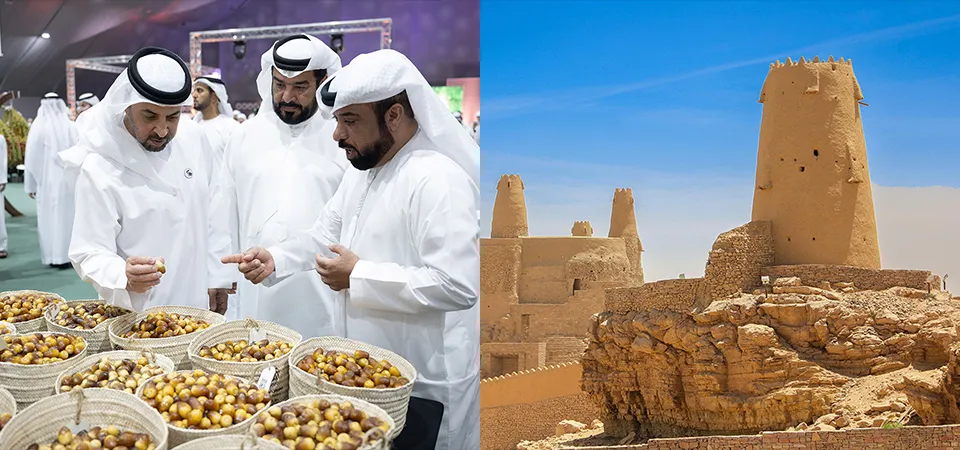
January is one of the best months to visit Al Jouf, a region in the north famous for its olive trees and ancient history. The weather is crisp and cool, which is perfect for walking through fields and ruins.
This month feels slow-paced and authentic.
| Average Temperature | Main Event | Best Experience |
| 12°C-22°C (54°F-72°F) | Olive Festival, Al Jouf | Tasting local olive oil and visiting ancient castles |
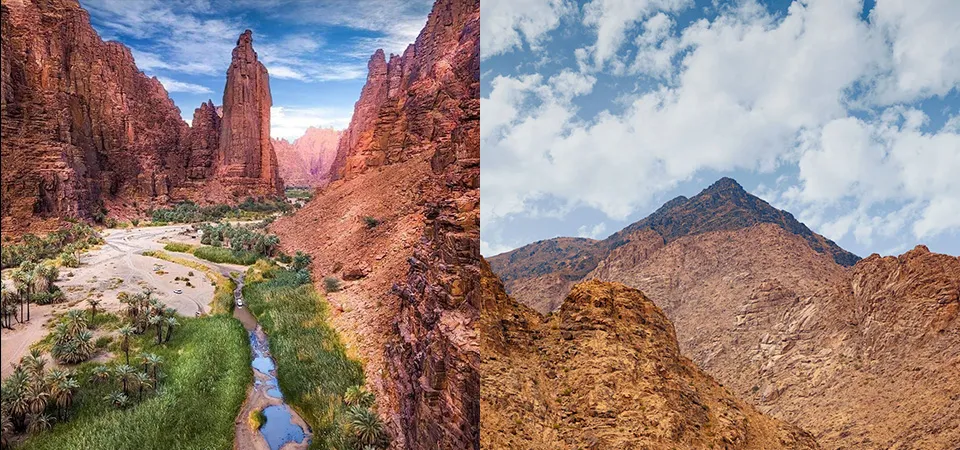
It snows in Saudi Arabia, especially in the northern mountains near Tabuk. February is a magical time for outdoor lovers. You can hike through trails that look dusted with snow while still feeling the desert atmosphere. The Jabal Al Lawz mountain, one of the highest peaks in the country, often sees snow this month. Locals and travellers gather there just to enjoy the rare sight.
Besides hiking, this is also an excellent month for camping and road trips, since the roads are cool and the landscapes are at their best.
| Average Temperature | Best Spot | What To Pack |
| 10°C-20°C (50°F-68°F) | Tabuk & Jabal Al Lawz | Warm jacket, boots, and gloves for hiking |
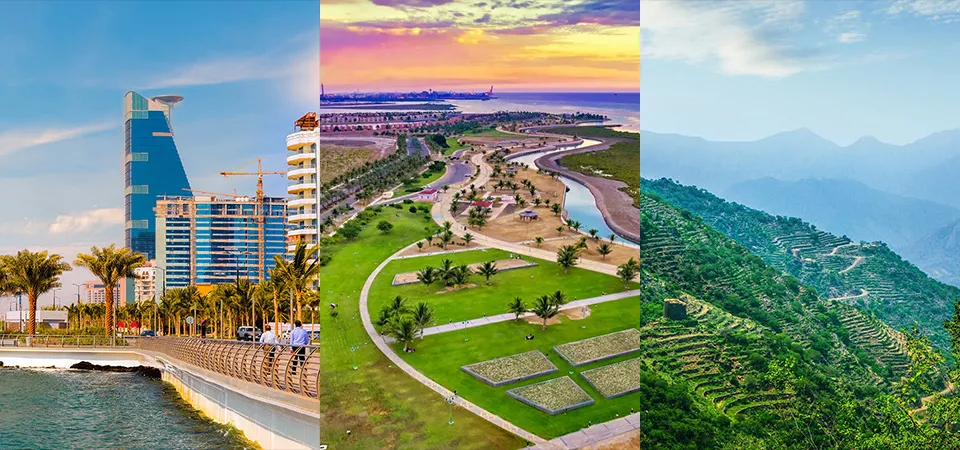
March is for beach lovers and divers. The Red Sea coast, stretching from Yanbu to Jeddah, offers some of the best underwater views in the world. The sea is calm, the water feels warm, and visibility is clear. You can spot colourful fish, coral reefs, and sometimes even dolphins. Since this is before summer, the sun is intense but not unbearable.
Where to go:
| Average Temperature | Water Temperature | Best Experience |
| 20°C-30°C (68°F-86°F) | 24°C-27°C (75°F-81°F) | Diving, snorkelling, sailing |
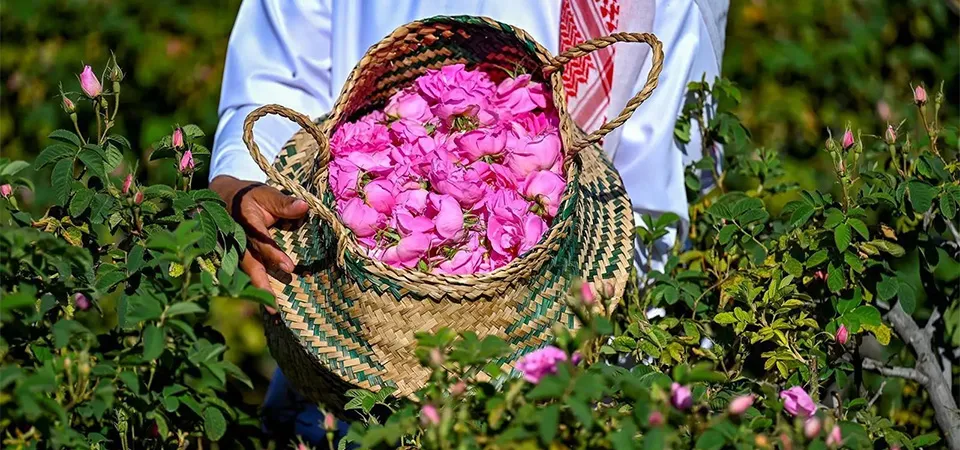
April belongs to Taif, a mountain city known for its roses. Every spring, the air fills with the smell of blooming Taif roses, and the hills turn pink. Visitors can tour local rose farms and distilleries, like Al Gadhi Rose Factory, where workers turn petals into rose oil and rose water.
A small tip: get there early in the morning to see the flowers being picked and weighed. That’s when the scent is most potent.
| Average Temperature | Main Attraction | Highlight |
| 18°C-28°C (64°F-82°F) | Taif Rose Harvest | Visiting rose factories and local markets |
April also marks the start of warmer days, so it’s a good month to explore before the heat sets in.
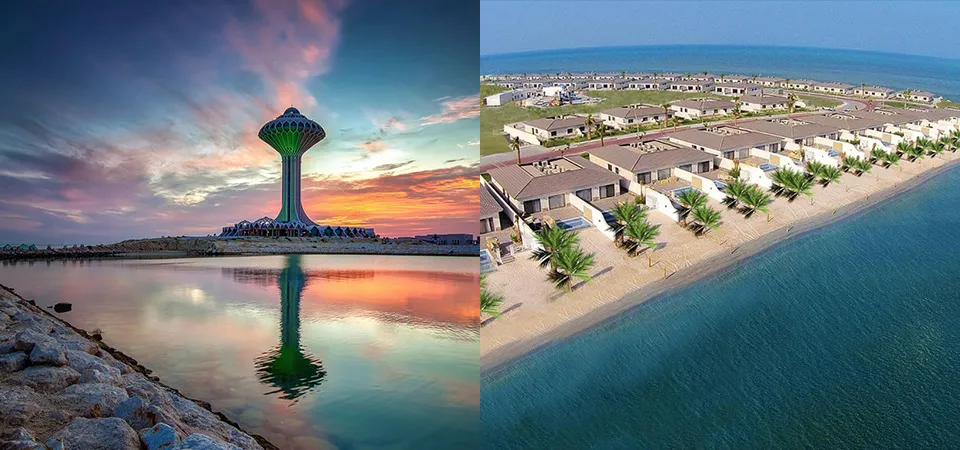
May brings warmer days, but the coastal regions still feel pleasant thanks to the sea breeze. It’s the perfect month to explore Al Khobar, Dammam, and Half Moon Bay before the real summer heat arrives. The beaches are calm, the evenings are breezy, and there’s a laid-back rhythm to local life.
With fewer tourists and reasonable hotel rates, May offers a nice balance between peace and activity.
| Average Temperature | Best For | Ideal Spots |
| 28°C-38°C (82°F-100°F) | Beach walks, water sports & short getaways | Al Khobar, Dammam, Half Moon Bay |
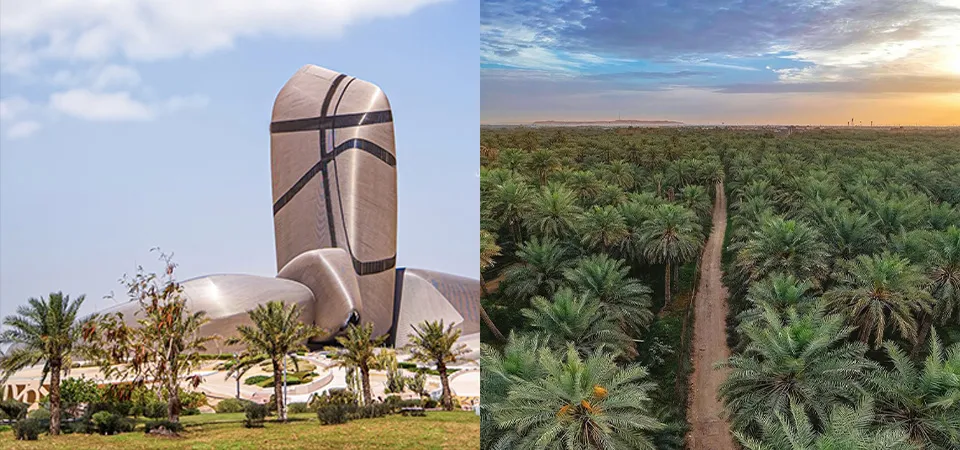
June starts to get hot, but that doesn’t mean you should stay indoors the whole time.
It’s actually a great month for indoor cultural visits like museums, theatres, and art centres. One of the best places to go is the King Abdulaziz Centre for World Culture, also called Ithra, in Dhahran (Eastern Province). The building itself is beautiful, and inside, you’ll find galleries, a theatre, a library, and interactive exhibits.
Families also enjoy visiting Al Ahsa Oasis, a UNESCO site filled with palm trees, canals, and old forts.
| Average Temperature | Best Spots | Tip |
| 32°C-42°C (90°F-108°F) | Ithra, Al Ahsa Oasis, Dammam Corniche | Plan visits in the evening or morning to avoid heat |
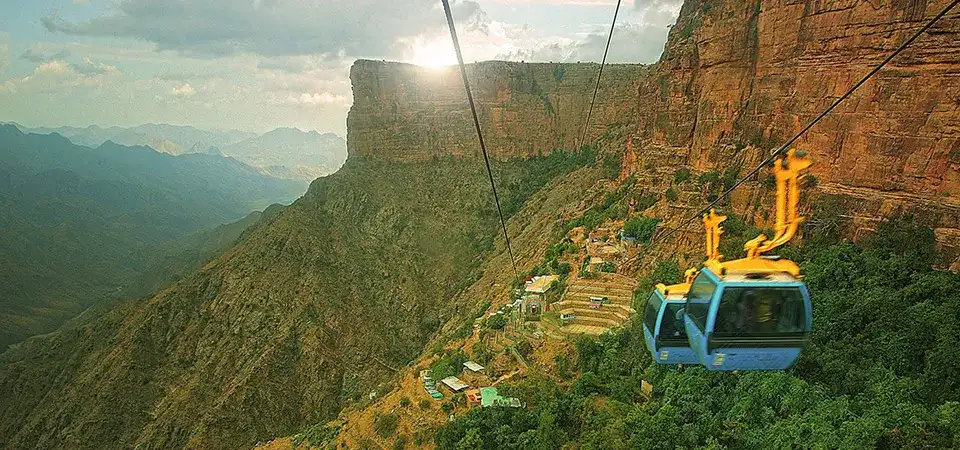
July may sound too hot for travel, but not if you head to the Asir region in southwest Saudi Arabia. Here, the Asir National Park stays pleasantly cool even in mid-summer because of its high elevation. The air feels fresh, the skies are misty, and you can actually enjoy outdoor walks.
You can hike, camp, or just drive through mountain villages surrounded by clouds. It’s one of the few places where the Saudi summer feels like spring. Families come here to picnic, take cable car rides, and enjoy the cool breeze.
| Average Temperature | Best Area | Best Experience |
| 18°C-28°C (64°F-82°F) | Asir National Park, Abha | Hiking, camping & cable car rides |
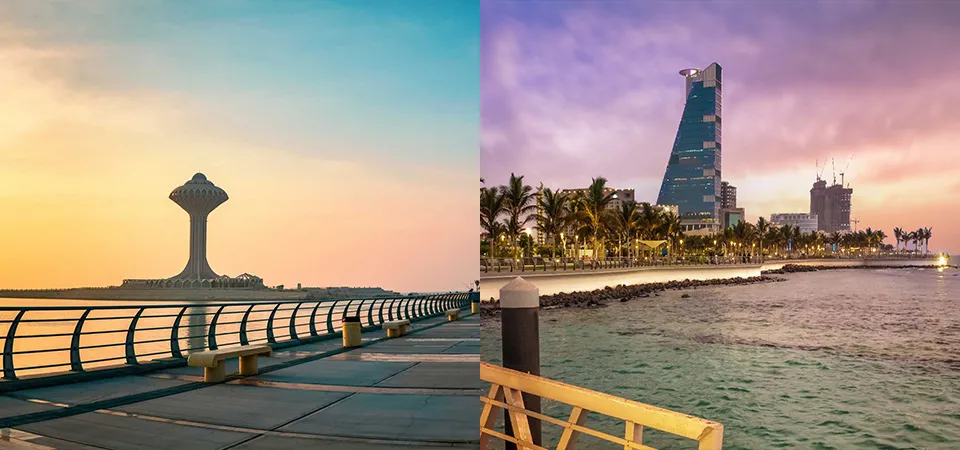
August is the hottest month in Saudi Arabia, so this is the time to go indoors and enjoy the city life. Malls, museums, aquariums, and restaurants become the main attractions.
Jeddah and Dammam both have huge shopping malls with everything. You can easily spend an entire day indoors without feeling the heat. In Jeddah, the Mall of Arabia is a must-visit, while in the Eastern Province, Al Jubail Mall offers a mix of shopping and dining.
| Average Temperature | Best Cities | Best Experience |
| 35°C-45°C (95°F-113°F) | Jeddah, Dammam, Al Khobar | Shopping, dining, visiting aquariums and museums |
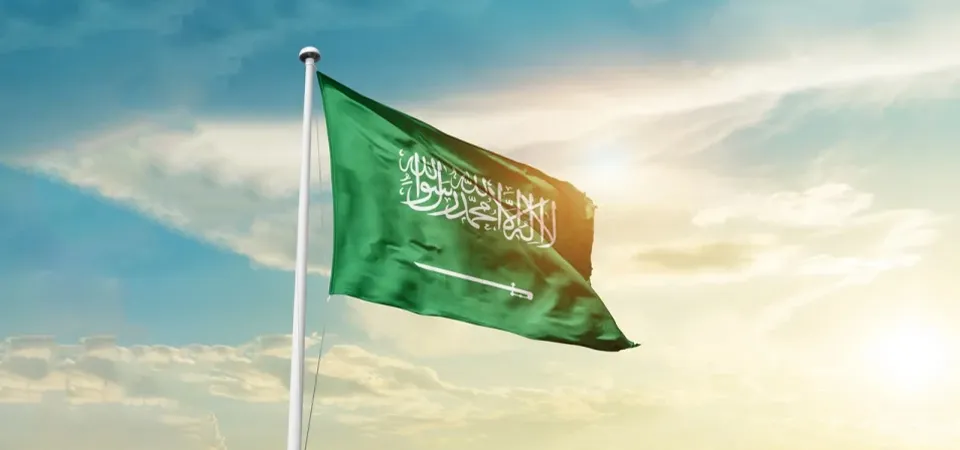
September is special in Saudi Arabia. On September 23, the country celebrates its National Day, known as Al Yom Al Watani. It marks the unification of the Kingdom in 1932, and it’s one of the biggest national celebrations of the year. You’ll see fireworks, concerts, cultural shows, and parades. People wear green scarves, wave flags, and decorate their cars with stickers and lights.
| Average Temperature | Main Event | Best Experience |
| 28°C-38°C (82°F-100°F) | Saudi National Day | Fireworks, parades, green-lit landmarks |
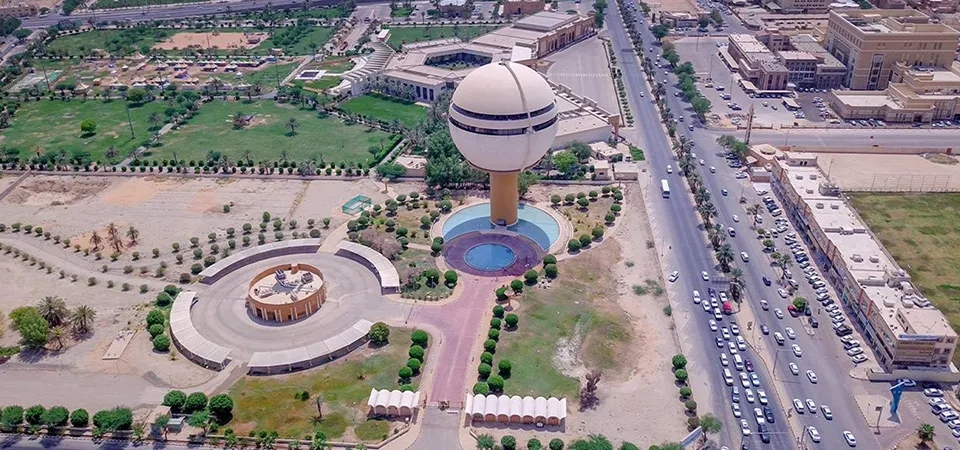
October is date season. Across Saudi Arabia, you’ll see stalls and markets filled with fresh dates in all colours, like golden, brown, and even reddish. Dates are a big part of Saudi culture. They’re eaten daily, especially during Ramadan, and offered to guests as a gesture of welcome. If you visit in October, head to Al Qassim, a region famous for its date farms and festivals.
The Buraidah Date Festival is the largest of its kind, running for several weeks with exhibitions, tasting events, and auctions.
| Average Temperature | Best Region | Best Experience |
| 24°C-36°C (75°F-97°F) | Al Qassim, Medina | Visiting date farms and local markets |
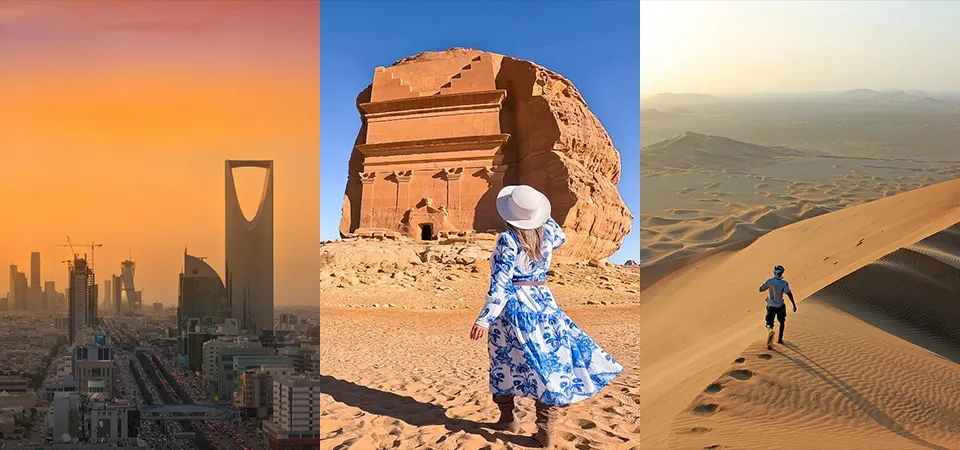
As the weather cools again, November marks the beginning of kashta season, or desert camping time. Families and groups head out to the dunes with tents, mats, and portable stoves for a few nights under the stars. Kashta is more than camping; it’s a part of Saudi life. People cook over open fires, share tea, and sit around talking for hours. The best camping spots are around Riyadh, AlUla, and the Empty Quarter (Rub’ al Khali).
If you visit during this time, bring warm clothes for the night. Desert temperatures can drop quickly after sunset.
| Average Temperature | Best Region | Best Experience |
| 18°C-28°C (64°F-82°F) | Riyadh, AlUla, Rub’ al Khali | Desert camping, stargazing, dune bashing |
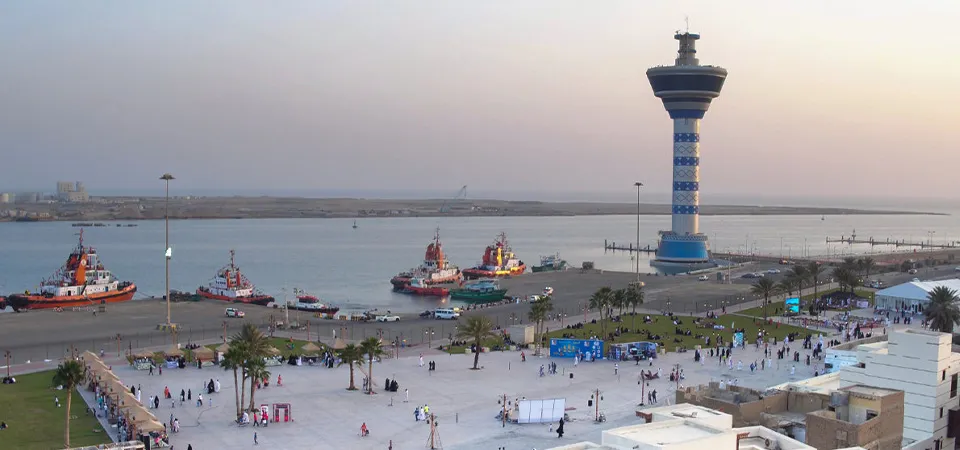
December is one of the best months to relax and enjoy the coast. With temperatures in the mid-20s°C (70s°F), the weather is perfect for cruising, beach trips, and snorkelling. Many yacht services offer tours from Jeddah or Yanbu. These trips include stops at small islands, coral reefs, and hidden beaches that you can’t reach by land. It’s also an excellent time for luxury tourism.
| Average Temperature | Best For | Best Experience |
| 20°C-30°C (68°F-86°F) | Beach trips, cruises | Calm weather, clear water, fewer crowds |
Saudi Arabia doesn’t have just one “best time”; it depends on what you want to experience. Every season has a story. Whether you’re hiking snowy trails in Tabuk, walking through rose fields in Taif, or diving into the Red Sea, Saudi Arabia rewards travellers who plan their timing right.
Yes, it’s considered one of the safest countries in the Middle East. Just respect local customs, dress modestly, and follow travel guidelines.
Yes, especially in Tabuk between January and February. The mountain areas often get snowfall, turning the desert hills white for a few days.
A 7 to 10-day trip is perfect for first-timers. It gives enough time to explore everything.
Yes, even deserts get cold after sunset in winter. Pack a jacket or sweater if you plan to camp or spend evenings outdoors.
Yes. Saudi Arabia has good highways and clear signs in English and Arabic. Car rentals are standard, and fuel is affordable, making road trips a great option.